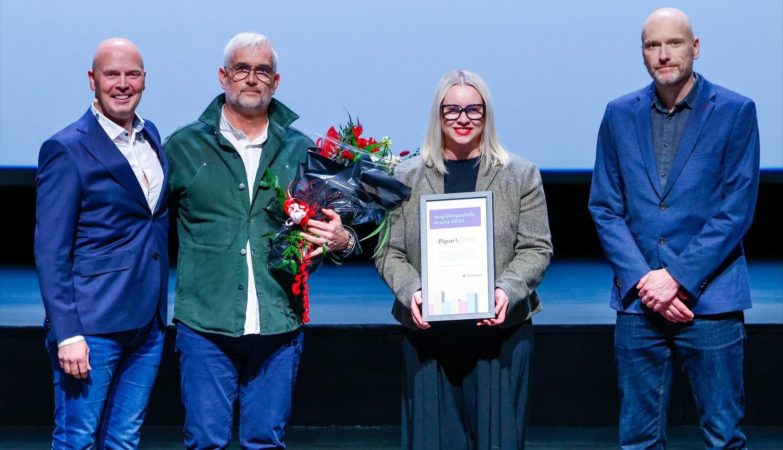As America celebrates Washington’s birthday next week, Scotland raises a toast to James Anderson, Father of American Whisky.
From Spencerfield Farm on the banks of the Forth, farmer and distiller James Anderson set sail for America in 1791 with his wife and seven children. There he advised George Washington to get into the whisky distilling business and helped America’s first President become the country’s biggest producer of whisky.
Spencerfield Farm is still in the whisky business today. The Spencerfield Spirit company produces and distributes two brands of whisky, Sheep Dip malt whisky and Pig’s Nose, a deluxe blend to the States.
In 2005, husband and wife team, Alex and Jane Nicol, launched Spencerfield Spirit, an independent drinks company, fighting to save orphan brands for the iconoclastic whisky drinker.
‘Orphan’ brands are once famous brands neglected by large companies because they are not seen to be profitable. The first two whiskies rescued from obscurity by Spencerfield Spirit are Sheep Dip and Pig’s Nose.
Both whiskies achieved cult status in the 70s and have been lovingly recreated by Richard Paterson, Scotland’s only third generation master blender. The phrase Sheep Dip is slang used by farmers for whisky and Pig’s Nose takes its name from an old farming saying ‘as soft as a pig’s nose’.
Alex Nicol of Spencerfield Spirit explains: “Whisky belongs on Spencerfield Farm and we are very proud of our links to the story of America’s whisky.
“Using his knowledge and experience of farming and distilling, James Anderson left our land in Inverkeithing and became Farm Manager for George Washington, encouraging him to open the first rye distillery at Mount Vernon.
“The distillery, in West Virginia is a classic replica of what small country distilleries looked like in Scotland at the time and under Anderson’s guidance, it became an overnight business success.
“We are following in his footsteps by keeping whisky deeply rooted to Spencerfield Farm and honouring his memory by bringing whisky from his homeland to his new found home in the States.
“As Washington is regarded as a symbol of the USA, we believe that James Anderson deserves recognition in Scotland for his entrepreneurial achievements, making him the undisputed Father of American Whisky.”
Professor Michael Moss from Glasgow University who has carried out vast research into the history of Scottish Whisky supports this claim.
“James Anderson was born at Spencerfield in 1745, the year of the Jacobite Rising. The next forty years witnessed a total transformation in Scottish agriculture as new ideas spawned by The Enlightenment were introduced.
“James Anderson, as a tenant farmer or tacksman, could count himself a pioneer of these improvements. Intelligent men educated in parish schools, they were often well read and their views were accurately described by the Scottish Bard Robert Burns, born 250 years ago on 25 January.
“Farms on the fertile lands of the east coast were well-suited to growing barley for London brewers and much more importantly the Scotch whisky trade. In 1788, Scotland’s ‘great distillers’ led by the Haig and Stein families faced ruin, precipitating a financial crisis very similar to that we are experiencing today with the failure of HBOS and RBS.
“It is not difficult to deduce that rather than face financial ruin, James Anderson old as he was, chose to brave the north Atlantic and seek a new life with is family in the United States. If he had known that the French Revolution would have driven up prices of agricultural produce, he might have stayed; but that would have deprived Mount Vernon of its whisky distillery.”
For more information on Mount Vernon or The Spencerfield Spirit Company visit
http://www.mountvernon.org/
http://www.spencerfieldspirit.com/
Ends
For more information contact: Emma McDonald :: 0131 225 7880 :: emma@hottinroof.co.uk
NOTES TO THE EDITOR
A History of James Anderson and Mount Vernon, George Washington’s distillery
James Anderson emigrated from Inverkeithing in Scotland and arrived in America in 1790 where he started farming in Virginia. By 1795, he was distilling near Fredericksburg, Virginia and in 1797 began working for George Washington at his Mount Vernon plantation, immediately persuading America’s first President to open his own distillery.
By 1799, Washington was producing 11,000 gallons of rye whisky a year in a state-of-the-art distillery, making him the United States’ largest producer. Anderson continued to work at Mount Vernon until after Martha Washington’s death in 1802. In late 1803 or early 1804, the Andersons moved south to manage White House Plantation for George Washington Parke Custis.
Historians believe that Anderson used larger distilleries in Scotland as a model for the Mount Vernon operation. Washington’s correspondence records: “Mr. Anderson has engaged me in a distillery, on a small scale, and is very desirous of encreasing (sic) it: assuring me from his own experience in this county…”(George Washington to John Fitzgerald, 12 June 1797).
Letters reveal Washington’s respect for Anderson – although they had their differences. On 11 June, 1798, Washington wrote: “I believe you are a man of strict integrity; sobriety; industry & zeal.”
Today the Mount Vernon distillery is regarded as a US national historic monument and Spencerfield Spirit is proud of its deep-rooted association. In 2006, Prince Andrew opened a $2.1 million (£1.1 million) reconstruction of the 18th century distillery.
The whisky sold at Mount Vernon today has an unfamiliar taste to modern palette as Washington did not age his whisky as distillers do today. The product is colourless and less refined. It would have been considered high-quality whisky in its day, but Mount Vernon Director James Rees once compared it to “white lightning,” slang for homemade whiskey or moonshine.
A History of Spencerfield Farm
Spencerfield Farmhouse, birthplace of Anderson’s wife, sits on the high ground to the east of Inverkeithing in Fife, surrounded by fields of wheat and barley, overlooking the Firth of Forth and the monumental Forth Rail Bridge.
Here the house has stood since it was built around 1510 as a defensive tower house watching over Inverkeithing harbour and guarding the trade routes between the Highlands and the South. In 1559, the land at Spencerfield was gifted by the Franciscan Friary of Inverkeithing to John Scott.
Four stories tall, with crow stepped gables built to a z-plan design, it has an entrance to the second floor on the north face. This lies in shadow so enemies would find it difficult to observe the comings and goings of the inhabitants.
Life remained turbulent in Scotland after Charles II was executed and Cromwell sent troops north to deal with the royalist supporters. After a winter spent bombarding the Fife coastline, the battle of Inverkeithing was fought in 1651 and Cromwell’s troops emerged victorious, leaving 2000 Scottish royalists dead on the battlefield near Rosyth Castle.
Awaiting transport back across the Forth the troops were billeted at Spencerfield where their celebrations, fuelled with whiskey, from the distillery got a little out of hand. The revelry resulted in the soldiers setting light to their gunpowder store and blowing the east wing of the house off.
The house was then ransacked before they left, according to the historian Reverend Wm Stephen with “a great quantity of silver plate, arras, hangings, carpets and other household plenishing”. However, enough survived of the house for it to be featured in Blaeu’s famous Atlas of 1654.
The first dedicated distillery on Spencerfield Farm estate was built in 1795 by Duncan Montgomery by the Keithing Burn. This extended the existing brewery and malt stead erected in 1784 by Messrs Duncan, Montgomery and Pinkerton.
The business flourished and by 1860 employed a working Coffey’s Patent Steam Still producing a Lowland malt whisky for the English and local markets. Reverend Andrew Robertson wrote in a statistical account “The spirits are said to be of a fine even superior quality and the sale of them is extensive. It seems to be in a prosperous and flourishing state”.







